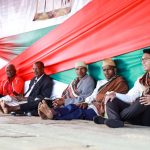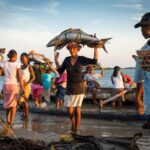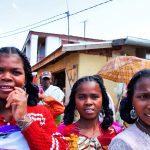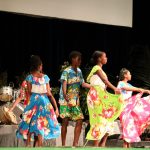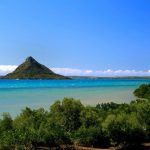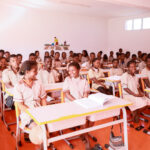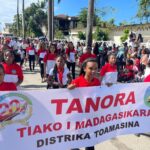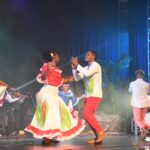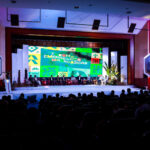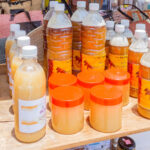Although Madagascar customs are different in this diverse Nation, the celebration of the feast of the dead is a moment of gathering for all this ethnic group. This is the whole month of November and not only on the 1st of that month, a strong attendance towards the region of the ancestors and native land of all. A very festive period during which, according to the means of everyone, we turn the dead or “Famadihana” to ask for blessing and protection from the ancestors. ![]() This is also the opportunity for each family to get together and strengthen their relationships the festivities, the Dihy Telo is ready. A special dance during which women sing and dance to the rhythm of drums and accordions and this in shirt and dresses with bright colors, with a hat. It should be said that in the past, the betsimisaraka used to be used mainly by clothes: Skirt, tunic and of course the hat In addition to the cult of the dead, other us and customs have also remained very perennial like the to-Laza, a collective circumcision for 15 days in southern winter and giving rise to great festivities.
This is also the opportunity for each family to get together and strengthen their relationships the festivities, the Dihy Telo is ready. A special dance during which women sing and dance to the rhythm of drums and accordions and this in shirt and dresses with bright colors, with a hat. It should be said that in the past, the betsimisaraka used to be used mainly by clothes: Skirt, tunic and of course the hat In addition to the cult of the dead, other us and customs have also remained very perennial like the to-Laza, a collective circumcision for 15 days in southern winter and giving rise to great festivities.
![]()
People attached to its many ancestral traditions, the antaisaka practice the worship of the ancestors in a lavish atmosphere. Practising Double Burial, you will discover in the region many provisional graves from which will then exhume, after two or three years, the remains to introduce them permanently into the “Kibory” or collective graves.
Diverse Madagascar
What also characterises this ethnic group is the different “Fady” or taboos that it observe. For example, you will never see a antaifasy working on another’s land or asking for money for a job! Another “Fady” also, the dogs that this ethnic group consider impure too, you will never find a canine root in the villages of antaisaka.
Circumcision is also a moment of joy and popular joy, among the antaisaka, it takes place between June and September. According to custom, the organising family offers a zebu to the village and the meat must not be missed on this great occasion whose goal is also to strengthen a social status. Polygamous people, the woman is little or not considered due in particular to an ancestral custom allowing the man to leave without obligation any woman and children to take another woman. Women do not have the right to land heritage even from their own parents.
![]()
Merina practice the worship of ancestors and circumcision from the austronesian culture. As for the worship of the ancestors or ” famadihana “, the body remains are exhumed from the family vault, a great general joy and then they are covered with a new armaan or ” Lamba Mena ” before being given to Their place. This is the opportunity for the family to strengthen family ties, also discover new arrivals and to reaffirm their belonging.
Circumcisions, turning of the dead or other important events such as the celebration of the malagasy new year or ” Asaramanitra ” are the subject of joy or less popular where the ” Hira Gasy ” (traditional music), ” Kabary ” (speeches), ” Dihy ” (Dances) and ” Joro ” (sacrifices of zebus) are done.
Another custom also preserved to date, the traditional wedding ceremony. According to tradition, the ” Fanateram-Bodiondry ” marks the engagement ceremony with the ” Kabary ” scheduled for this occasion. Three Envelopes are then offered to the young girl’s family: the first containing the different tickets and coins in circulation, the second the ” Ala Volo fotsy ” especially for the father and finally the ” tsaka rano “. a gift is offered to The Future Bride by her family (furniture, kitchen utensils…) at the wedding.
![]()
People attached to different traditions, the sihanaka observe for example many rules regarding pregnant women. Here, it is strictly forbidden for pregnant women to sit at the threshold of the door. They must also stay away from ugly or unattractive things to prevent the child from being born. Birth is carried out in the presence of parent women and husband. Later, for a lunar month she returns to her original family before returning to her home.
In the sihanaka, a child can only be fully accepted in their clan after having his first haircut and being circumcised. Another custom also, the sacred posts “Tsikafana” topped with zebu horns. For a wish or to remember a great event, these posts are once built in each village and witness the protection of the “Razana” or ancestors.
![]()
Among the most observed us and customs among the antakarana, the “Tsangantsaigny” or ceremony of the royal mast gives rise to a great festivity marking the continuity of the crown. This great ceremony takes place every 5 years in the presence of the king and the whole people of the antakarana. Before the ceremony, the king goes to nosy mitsio island where king tsimiharo is buried and then in the sacred caves. Nosy Mitsio was indeed the last refuge and falls of this former king antakarana during the merina invasion in the region.
During the ceremony, the mast is replaced by two male and female trunks of hazoambo, cut and cut on site in the forest. It is then brought to ambilobe to be assembled and sprinkled with honey and alcohol and then coated with fat. From Slaughter To Assembly, this procedure can last 10 days. Once the mast is raised, are set at the top of the mast: the national flag and the king’s flag. Please note that this event also gives rise to a collective circumcision.
It is forbidden during these festivities to put a hat or put on shoes, and the wear of loincloth is mandatory for all. The cult in memory of the ancestors called “Tsakafara” also gives rise to celebrations in the antakarana.
![]()
Various rituals are practised by the sihanaka and most often concern agriculture. There are ritual ceremonies of annual demand for rain water for rice culture but also to ask for protection and blessings for the inhabitants.
The “doany”, sacred places because graves of the legendary founder of the city around 1600, his nephew and son must be maintained. A strictly observed obligation because otherwise the normal cycle of rains would be said to be disturbed. Note that the ethnic group also practices the cult of ancestors and its graves are composed of a ground of land adorned with a long funeral mat or a less long mat supporting a zebu skull and sometimes of. Funeral models or “sary” are built above the graves.
For each event, participants wear special outfits and follow some ancestral rules. Called ” Volam-Bita ” and ” sarabe “, these are ceremonies of sanctification including communication with the spirits of the dead by the sacrifice of a zebu. The ” Sarabe ” is more important than the ” Volam-Bita ” because requires, among other things, the presence of ” tangalamena “, local kings for festivities that can last three days.
The ” Sarabe ” or ” Joro Orana ” may have the purpose of asking for the blessing of the ancestors to obtain a good rainy season and therefore, good harvests. Another custom among the sihanaka, a young boy can only be circumcised after the ritual ceremony of the “Famoahan-jaza andohan’ omby”, that is, after making the child pass on the head of a zebu. This ceremony is followed by three days of festivities and gives rise to a popular celebration.
![]()
Practising the cult of ancestors and circumcision, the betsileo observe precise rules during these different rituals. As in all the ethnic groups of Madagascar, the spirits of the ancestors continue to be respected but also feared.
At the betsileo, it is mandatory that in every home is dedicated a place specially dedicated to ancestors. On the great occasions, the ” Ray Aman ” go to commemorative stelae called ” Vatolahy ” or ” Tatao ” to use the spirits and ask them for protection, blessing or solution. If the circumcision and the turning of the dead give rise to great celebrations, a birth or even the construction of a new home is also.
According to the tradition of betsileo, when you are invited to a party, it is the use of a small bag of rice that will be given to the “Ray of the house” of the house. Note that the betsileo also practice the ” famindrana “. the deceased here is dug and put back in a new tomb, the opposite of a turning of the dead where the latter is dug, renveloppé of a new ” Lamba Mena ” or funeral fabrics Before being put back in his place.
![]()
Ethnic group very rooted in its traditions, the antemoro most often turn to their Devin called “Ombiasy” during important events or situations. The latest control art called ” Sikidy ” as well as the ” Hasina “, Science related to astrology. Also considered a healer, it is to him that most often the people of the antemoro will ask for advice and remedies.
Kingdom to date rule by the descendants of the first antemoro kings, the us and customs have remained very perennial and, as the tradition wants, carried out according to the traditions and recommendations reflected in sorbian left by the bottom.
So, every year in December in vohipeno, a celebration in honour of the ancestors and is characterised mainly by different offerings including the sacrifice of a zebu to the red dress. The ceremony takes place when the zebu is immolated. It follows a maintenance of the graves in the general cheer.
Important ceremonies and festivities (birth, marriage, funeral, exhumation) are also carried out according to very strict rules. As for marriage, the future groom will not be able to choose a woman of higher rank than his.
![]()
As with all the other ethnic groups in Madagascar, the traditional us and customs are still very perennial and are often found in daily life. In the antefasy, very strict laws are imposed especially in funeral art but also in the chain to ensure the sustainability of their traditions. Thus, as part of a funeral ceremony, the deceased is buried at the bottom of the forest with all these properties (Jewelry, weapons…). The Tomb is also decorated with many objects and murals telling the life of the deceased and his class Social.
In everyday life, each village has an authority composed of wise people and a wren who are consult for great decisions or for an arbitration. To those respected by the antefasy also count the devins and wizards. The opinions and advice of the latter are requested before the realisation of a marriage, a trip but also a funeral. They are also considered to be healing to whom the antefasy turn to find remedies usually composed of rituals and medicinal plants. Please note that this ethnic group does not particularly commemorate an annual event. Only marriage and circumcision give rise to great celebrations.
![]()
The Antambahoaka observe many traditions including the sambatra that take place every 7 years. The King is recognisable by his traditional dress composed of a long dress with red and black stripes and a red chéchia, color of kings or “mpanjaka”. a ritual celebration whose festivities can spread from 15 days to a month, The Sambatra is mostly a commemoration of the journey made by Arab ancestors to mananjary. It is closed by a collective circumcision, a moment of great festivities punctuated with traditional dances and where alcohol flows. This is the opportunity for this ethnic group to consolidate their belonging and their relationships or “fihavanana”.
In addition to this festive period, the antambahoaka are also known for their “Fady” or taboo whose main is: the birth of twins. Considered a curse, they are given today to adoption associations if they were left in nature from their birth. Some families prefer to keep one and give the other child to religious.
![]()
Ethnic group attached to its traditions, the tanala observe different rituals from the birth of a child to his death. In the case for example of the birth of an atypical child, he will not be the subject of any attention and leave to the good wanting of the gods. In Case of death he will be buried without any ceremony and out of the family tomb just like the case of a child who died shortly after his birth.
The recognition of the child will only be 3 months later after a ceremony called “Mamoaka Zaza” or the child’s exit. An beef is sacrificed on this occasion at the foot of a “Vatolahy” or male stone and follows great celebrations. Circumcision takes place the same with more ceremony and offerings to the ancestors.
Concerning Marriage, the tanala of ambohimanga allow the unions between cousins and cousins in the south and east, ban the unions between the descendants of two brothers or two sisters except the unions between the descendants of a brother and a Sister. During a death, a funeral vigil is carried out in the box of the chief of the village where the deceased is extended, covered with a armaan or “Lamba Mena”. the next day, he will be brought to the family tomb with different objects he loved Of his life.
![]()
The Bara custom wants that to show their bravery and seduce young women, a bara must know how to steal an beef! An Ancestral tradition to which the ” Ringa ” or ” Moraingy ” is added, which consists of a fight with bare hands. A form of training in the case of a duel to the body with the enemy.
In addition to the practice of the in fortune arenas especially on great occasions, bara also practice the “Savatse” which is a collective circumcision allowing male children to be recognised by their clan and then be able to integrate the family tomb. It is also the opportunity to practice the dance of the ” Papanggo dance on a wooden pole where the hawk is flying.
Like other ethnic groups living in Madagascar, bara also practice the cult of ancestors. The Dead are placed in Roulette Coffins adorned with 3 Colors: Red, black and blue. They are then placed in rocky cavities made of flat stones very difficult to access. Parts of bara territory including the famous ” Sacred Forest ” in tsaranoro and karambony are therefore considered ” Fady ” or banned from access. Only the families of the dead can enter these territories especially during the “FAMADIHANA”, AND THIS EVERY 5 years.
![]()
The tsimihety have their own customs like the other ethnic groups of Madagascar. Their traditional song is the “koro” Janazah for great events.
Part of the tsimihety installed in the west practice the “tromba”, a ritual made of trancing to name a spirit, usually the spirit of a late king. It’s not here, not a custom of tsimihety origin but borrowed from the sakalava. The ceremony takes place in a box called ” Zomba ” where dances and songs to the sound of marine wrong are carried out under the vigilance of a ” Saha ” or medium. Note that this is the only ethnic group not to be under the authority of a king but wise people called “sojabe”.
The practice of ” Tromba ” is still very perennial during the annual holidays taking place in the ” Doany ” or sacred Royal Shrine of the sakalava. Regarding wedding ceremonies, many rituals are observed for the young man who wishes to marry, he must previously build his future home and then present the chosen one of his heart to his parents. If union unions are forbidden, the tsimihety of mandritsara allow it from the third generation. Other banned are still applied: Ban to marry the “Kelihantsy” considered as a cursed clan.
![]()
The Dead Kings are asked by the sakalava through a “mpitaiza”, to intervene in their daily lives but also during ceremonies, delivering advice and messages. This is the ritual of the “Tromba” or trance. A rite that also marks the close relationship between the living and the dead. The ceremony of the royal relics bath is called ” Fitampoha ” in the menabe and ” Fanompoambe ” in the boina. They take place at different times and each have their specific characteristics.
Ceremonies and dates to remember
The Fitampoha: practice every five years in belo on tsiribihina for the menabe
The Fanompoambe: takes place every year in majunga in the boina, in the month of July and August
The Savatse: or circumcision in the sakalava, during the fresh period of the year (June-September).
![]()
Practising the cult of ancestors through a typical funeral ritual to the ethnic group, among the age we take the deceased away from the village to bury him in a “Kibory” or collective grave. A place where no one will come to disturb him but, for everyone to remember the deceased, a stone is built in the village. This Memorial Stone is considered to be home to the spirit of the deceased and is often the subject of a cult to request blessing and protection. A Funeral Vigil is carried out before each funeral during which the “Sarandra” is janazah.
Also practising a cult of possession known as bilo, it is especially a call to spirits accompanied by Dances and music so that the spirit manifests itself as part of a request for healing or to solve a personal or collective problem.
![]()
Known to be great brave warriors, the antanosy are also very attached to ancestral traditions. With a territory ranging from ihorombe to bekily to Fort-Dolphin, the antanosy practice the cult of death where the zebu holds a place of choice. A sign of wealth, the number of zebu measures the awareness but also the social position. At his death, all or part of the livestock owned is sometimes killed and consumed by the family and tribe. The Horns will be used to adorn the tomb of the deceased who according to his wealth will be more imposing.
Mastering the art of art, the antanosy always refer to the advice of their devins or “Ombiasy” whether it is for the construction of a tomb or important events to come. The Coffins are made of two tree trunks that will be violently shaken during a funeral dance before being buried. Please note that Royal Graves can measure up to 50 m aside!
Adorned also with “Aloalo” (wooden sculptures) and body statuettes, they are unfortunately targets of looting. The Bilo dance is a dance made of trancing very practised by this ethnic group to extract they say evil. Beko (A Capella) is a typical antanosy funeral song made of litanies to accompany the spirit of the deceased.
![]()
If we lend of origins to the vezo, for them, they would be descendants of the union of a fisherman and a mermaid. For the vezo, the sea is a feeding mother so do they only fish the ones they need to feed. Also, fishing more than it takes is to brave a forbidden that could cost them: a wreck, less fish during future sea trips…
The us and customs are always related to the sea like that of turtle fishing in which a true ritual is practised before its consumption. Indeed, the turtle once caught must first be sacrificed on a dedicated altar before the flesh is consumed exclusively by men.
Regarding the vezo funeral art, the graves are easily recognisable by erotic statues made of wood standing above the graves scattered in the dunes. The layout of these statues meets certain rules. For example, the statue of man must turn North-East instead of that of the woman, turned to the southwest.
![]()
As well as for most Malagasy ethnic groups, the mahafaly people practice the cult of the dead. For the mahafaly ethnic group, what has been acquired from the living of a person must be sacrificed for the ancestors and for the creator to the death of the deceased.
Thus, the importance of the deceased is represented by the number of zebus killed at his death and whose horns adorn his tomb. The funeral plays a double role because it helps to strengthen ties with the beyond as well as with those of other lineages. A “Joro” is carried out during this ceremony that consists of sacrificing a zebu.
The “Savatse” or circumcision also enters ancestral practices. The circumcision of a male child gives him the right to enter the family tomb and be recognized by his whole clan. According to tradition, each village is controlled by a “Zakan-Draza” composed of wise people in the event of internal conflicts and for major events.
Ceremonies and dates to remember
In June: the “Savatse”
Between August and December: “Havoria” or turning the dead.
- CULTURE PLAYS AN IMPORTANT ROLE IN ECONOMIC DEVELOPMENT - 28 May 2024
- THE PRIDE OF WOLAYTA: THE HEROIC BOXER BETEL WOLDE - 11 April 2024
- THE PEACEFUL CELEBRATION OF EID HOLIDAY IN HARAR CITY - 10 April 2024

